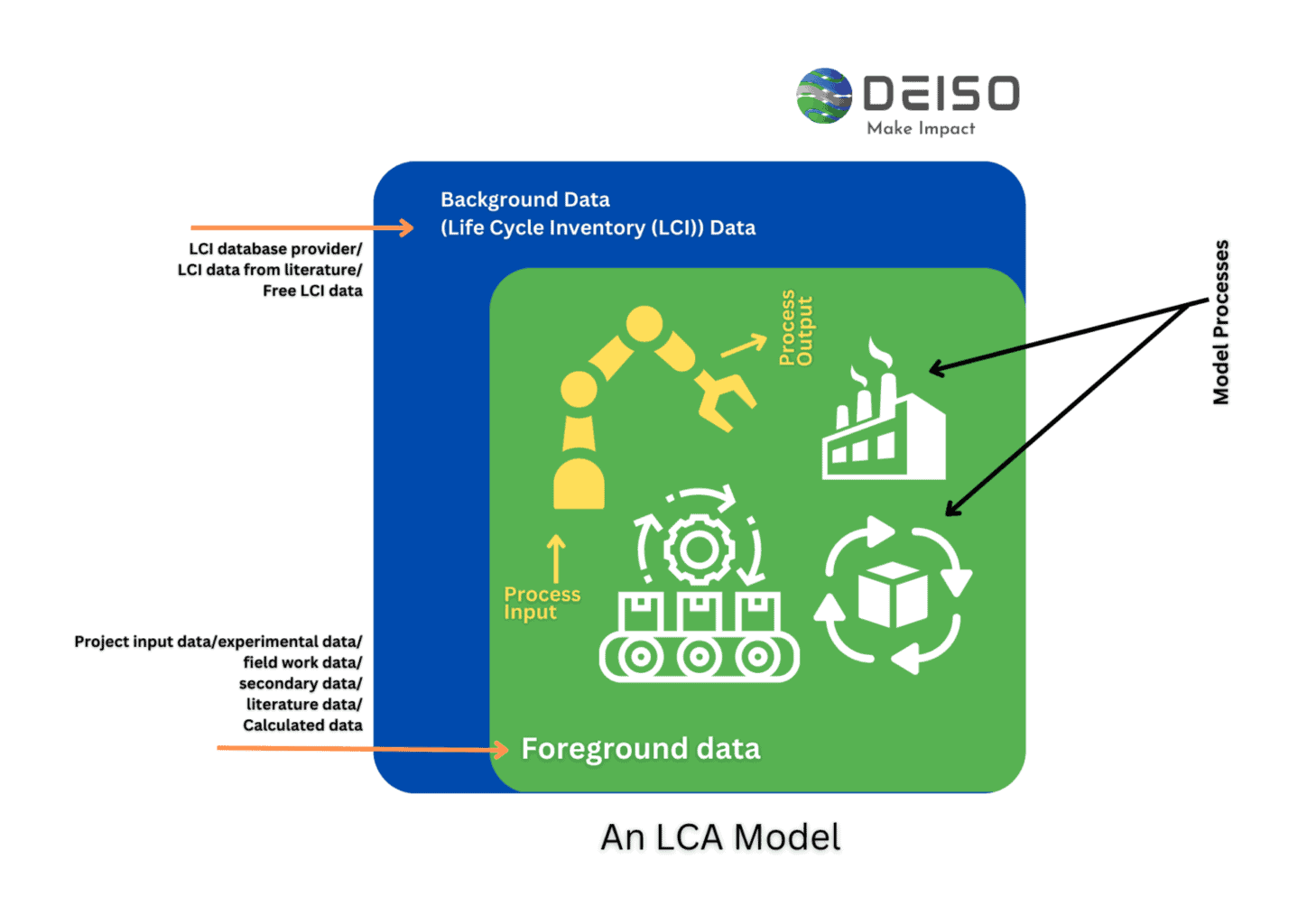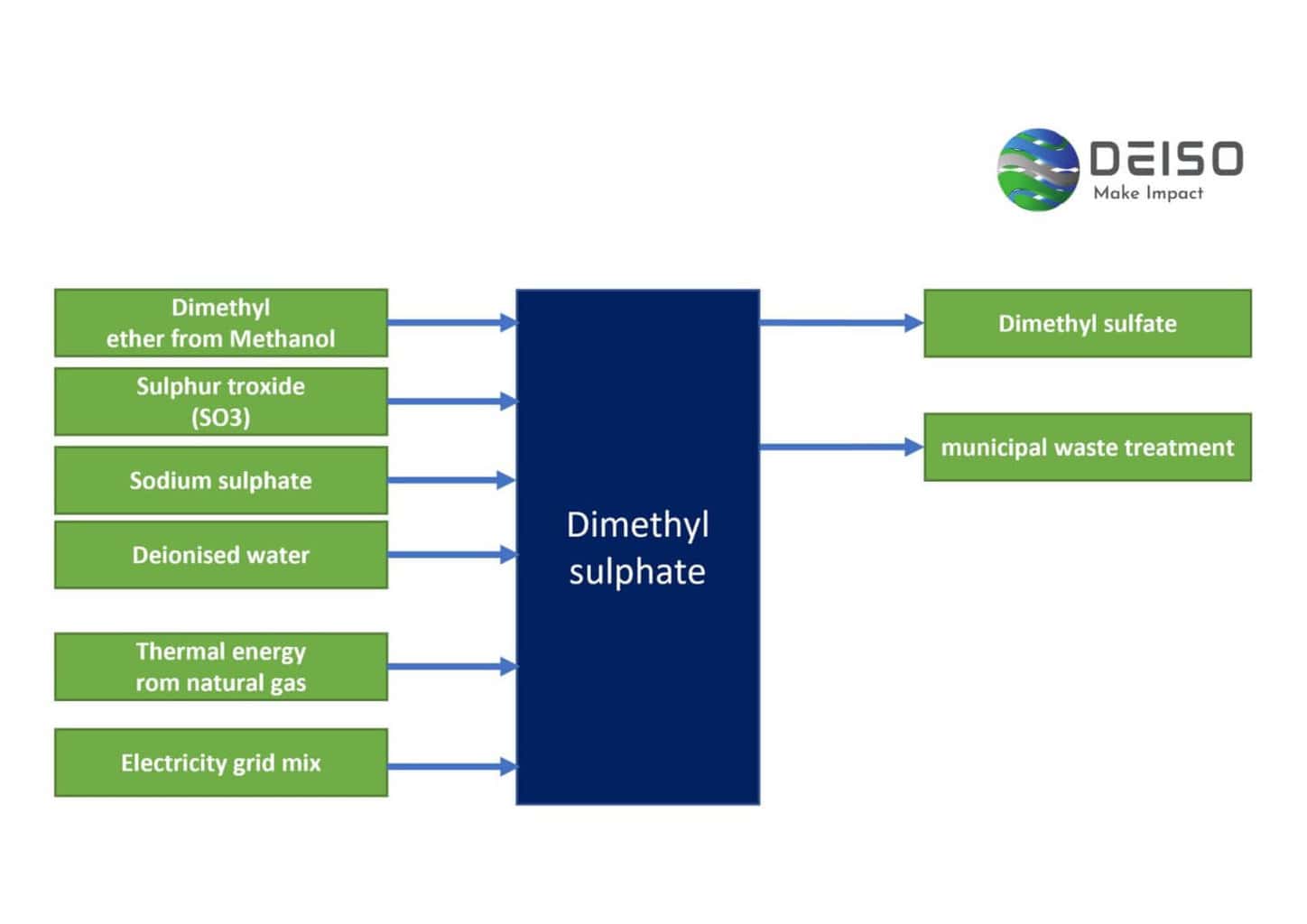Table of Contents
Background
Data collection is one of the most critical steps in the life cycle evaluation process. LCA is a thorough assessment of a system’s or product’s environmental impacts. It necessitates a comprehensive examination of a system’s complete life cycle, from raw material extraction through manufacturing, usage, and disposal. Data from every life cycle step must be gathered to complete an accurate LCA.
The system boundaries must be identified as the initial stage for LCA data gathering. Which stages of the life cycle should be included in the evaluation are determined by system boundaries in the goal and scope definition stage of LCA. Gathering data may start after the limits have been set.
Many other sources of information may be used to gather data, including business records, government databases, industry reports, scholarly research, and public polls. All information must be accurate, trustworthy, and current. Data on emissions, waste, water use, materials, and energy should be collected. Data about the amount and quality of materials used to create the product or system should also be included.
After the data has been gathered, it should be examined to pinpoint the key elements and procedures with the most significant environmental impacts. With this knowledge, it will be possible to find solutions to lessen the system’s or product’s adverse environmental impacts.
Data collecting for LCA may be time-consuming and challenging to perform a thorough and accurate evaluation. To guarantee the validity of the assessment’s findings, careful consideration must be given to the reliability and correctness of the data obtained.
Background Data vs. Foreground Data
Life Cycle Inventory (LCI) data is called background data. The data is what we obtain from an LCI database provider, often commercial database(s) that we may purchase. It contains a database representing the emission factors of many processes in several industries. For instance, the carbon dioxide emitted while manufacturing 1 kg of steel may be one of the emission factors. How much nitrogen dioxide is released while manufacturing 1 km of aluminum? Methane (CH4) is released when 1 kilogram is disposed of in a sanitary landfill, and so forth.
Where the foreground data is the data that embodies or describes the system under study or modeling technically, examples include secondary data, data obtained from simulation, calculation, field trip work, literature, production activities, operations, or chemical experiments. The foreground data from the waste management is an example: For instance, if a waste management system is being studied or modeled. Then, the foreground data compasses the waste composition. For instance, the proportions of the paper, plastic, and metal waste, etc., a treatment’s % of the proportion of incineration, and the proportion of paper and plastic waste incineration. The proportions of waste paper, plastic, and wood will be disposed of in landfills. Data on the distances that vehicles need to drive from the place of trach collection to the final disposal. The gasoline required by each vehicle for waste collection and disposal or treatment.
In summary: Foreground data describes the system technically, while background data describes the system environmentally with emission factors that can be obtained from databases. The figure below demonstrates the difference between both types of data.
How to decide and find the upper body? LCI database for your project.
The difference between background data and foreground data in an LCA model
Example: Dimethyl sulphate (DMS) Production from Sulphur Trioxide
Dimethyl sulfate is a chemical molecule having the formula (CH3)2SO4. It’s a colorless, volatile liquid with a pungent stench. It is primarily utilized as a methylating agent in organic synthesis, and its toxicity makes it a moderately hazardous chemical. It makes many products, including medications, colors, polymers, and food additives. It’s also utilized as an insecticide, herbicide, and defoliant.
Dimethyl sulphate ((CH3O)2SO2) is manufactured industrially by the reaction of dimethyl ether with sulfur trioxide. The reaction is carried out in water-cooled, vertical aluminum or stainless-steel tubes and is a continuous process. The model considered the elimination of dimethyl ether by vacuum distillation over anhydrous sodium sulphate in technical-grade dimethyl sulfate.
The background system of electricity and thermal power: The power (and thermal energy as a byproduct) utilized is tailored to the needs of each unique nation. The country-specific modeling is accomplished on many levels. The individual power plants in operation are simulated using the present national system. Net losses and imported power are included. Second, the power plants’ national emissions and efficiency are modeled. Third, the country-specific fuel supply (proportion of resources consumed through import and local supply) is considered, as are the country-specific features (e.g., element and energy contents). Fourth, the import, transportation, mining, and exploration procedures for the energy carrier supply chain are customized to each power-producing country’s unique circumstances.
Steam: The steam supply is simulated according to the country’s condition in terms of technological efficiency and energy carriers utilized. Coal, crude oil, and natural gas needed to generate steam are modeled based on the unique import circumstances.
A country-specific, refinery-parameterized model represents refinery products such as diesel, gasoline, gases, fuel oils, essential oils, and residues such as bitumen. The refinery model reflects the national standard in refinery procedures (e.g., pollution level, internal energy consumption) and the unique country-specific product output spectrum, which might vary significantly across countries. The refinery products utilized demonstrate the country-specific usage of resources. Again, the crude oil supply is modeled based on the country-specific crude oil situation and the features of the resources.
All these mentioned processes represented the foreground data that should be gathered; in this example, it might be from (1) laboratory chemical experimental work, (2) process simulation with a chemical simulator software such as Aspen Plus, (2) or from the plant data itself if it is already established (constructed and is in operation). See the below figure for a demonstration of the LCA system being modeled in this example of Dimethyl sulphate ((CH3O)2SO2).
The LCA model of Dimethyl sulphate ((CH3O)2SO2)
An LCA analyst requires the two forms of the data with the Dimethyl sulphate (DMS) Production from the Sulphur Trioxide’s LCA model given above. The foreground and background information (LCI data). The data in the foreground are those needed to technically explain the model, such as the chemical feed used in the chemical reactions that produce dimethyl ether from methanol, sulfur trioxide, sodium sulfate, and deionized water. And this may be measured in Mole per hour units and translated to kilogram per hour. In addition, the quantity of natural gas energy needed is expressed in MJ per hour. Data in MJ/Hour for the power grid mix is also needed. These grid mix statistics offer information about the composition of the electrical grid mix in the nation/country where the technique is being researched or developed. To construct a grid mix with a capacity of 3.7 MJ, this may contain a percentage of coal, a percentage of natural gas, a percentage of heavy fuel oil, a percentage of nuclear energy, a percentage of renewable energy sources including wind, solar, and hydropower, etc., and a percentage of waste.
The quantity of wastewater treatment is necessary for the output. Dimethyl sulphate (DMS) is further needed, however. The entire production determined by a chemical experiment, chemical simulation, such as that found in Aspen Plus, or plant production data may also be this quantity, which can be regarded as a functional unit of 1 kilogram of dimethyl sulphate (DMS) production. These are instances when foreground data may be required. An LCA analyst must utilize an LCA database with emission factors for hundreds of emissions from each process input and output in the above graph to get the background data. For instance, heavy metal emissions and the other 6 greenhouse gases. BOD emissions, BCD emissions, and so on.
How to Choose an Appropriate Life Cycle Inventory (LCI) Database for your Project
First, remember that more than one database is sometimes required, particularly for large LCA projects. You may sometimes need to merge data from several databases. The second thing to bear in mind is that, sometimes, you could always run into a problem. A problem with data gaps or a shortage of data when the data needed for a particular procedure is absent. For instance, this is typical in the chemical industry. Mathematical modeling combined with data estimate methods is one way to address the data gap problem. Or by using outdated models that may estimate current facts. Another strategy is to simulate the process being researched with proxy data using a process with comparable physical and chemical properties to the process being examined with the lacking data.
Create a flowchart showing the system boundaries of your case study and all the current input and output to processes as the first step in identifying what database you require for your project. This aids in getting—your understanding of the processes in your system and the following database requirements. The second follows. The second recommendation in this article is to browse the LC databases repositories lets you simultaneously search among many databases, including the two websites listed below.
- The GLAD platform: https://www.globallcadataaccess.org
- The openLCA Nexus Platform: https://nexus.openlca.org
Second, you need to know what databases are available on the market, whether for paid or unpaid usage. You should also be aware of the types of LCI databases used in your business/industry, whether in the textile, building, chemical, textile, or electronics industries.
The system scope of your case study is often the deciding factor when choosing an approval database. What are the limits of the system? What procedures fall under and don’t? All this information is crucial for figuring out what database is required and determining whether the operations are gate-to-gate, the gate to grave, cradle-to-grave, or cradle-to-gate.
Utilizing an LCA program is the alternative strategy. For instance, the ecoinvent database is one of the 8 with the SimaPro program. The database is one of the most well-known since it includes many data sets and spans various sectors. If you use the GaBi program, you will have access to around 20 databases that you must buy separately. GaBi software does, however, have a database of its own. The database of processes from many industries is known as the professional database. Using openLCA software is the other choice. A license is not necessary to use the openLCA LCA program, which is available for free. However, your project’s database(s) must be purchased. Searching for already-established processes on the openLCA Nexus website is a valuable technique. This displays the processes that are present in the related database. Another point to remember is that LCI data is country-specific, so you should consider the region or the country where you are conducting the study.
Finally, figuring out which LCI database is necessary for a particular project in a specific business develops over time as an LCA specialist gains expertise in both his industry and the available databases. In general, the more LCA projects you complete, the more familiarity you will get with the current databases, how to search in them, and where to look for them.
There is no set guideline for selecting the best database for your project. It would help if you mixed a variety of talents and expertise. Consequently, you should do your search on the current databases, either for free or for a fee. However, the abilities and advice you need to know and develop are summarized in this article.
There is no set guideline for selecting the best database for your project. It would help if you mixed a variety of talents and expertise. Consequently, you should do your search on the current databases, either for free or for a fee. However, the abilities and advice you need to know and develop are summarized in this article.
Life Cycle Inventory (LCI) Data Consultancy Service
Life Cycle Assessment (LCA) Training
If you enjoyed this post, join our free newsletter for more valuable content! Subscribe now for informative articles, service updates, downloadable guides, and more. Click here!






